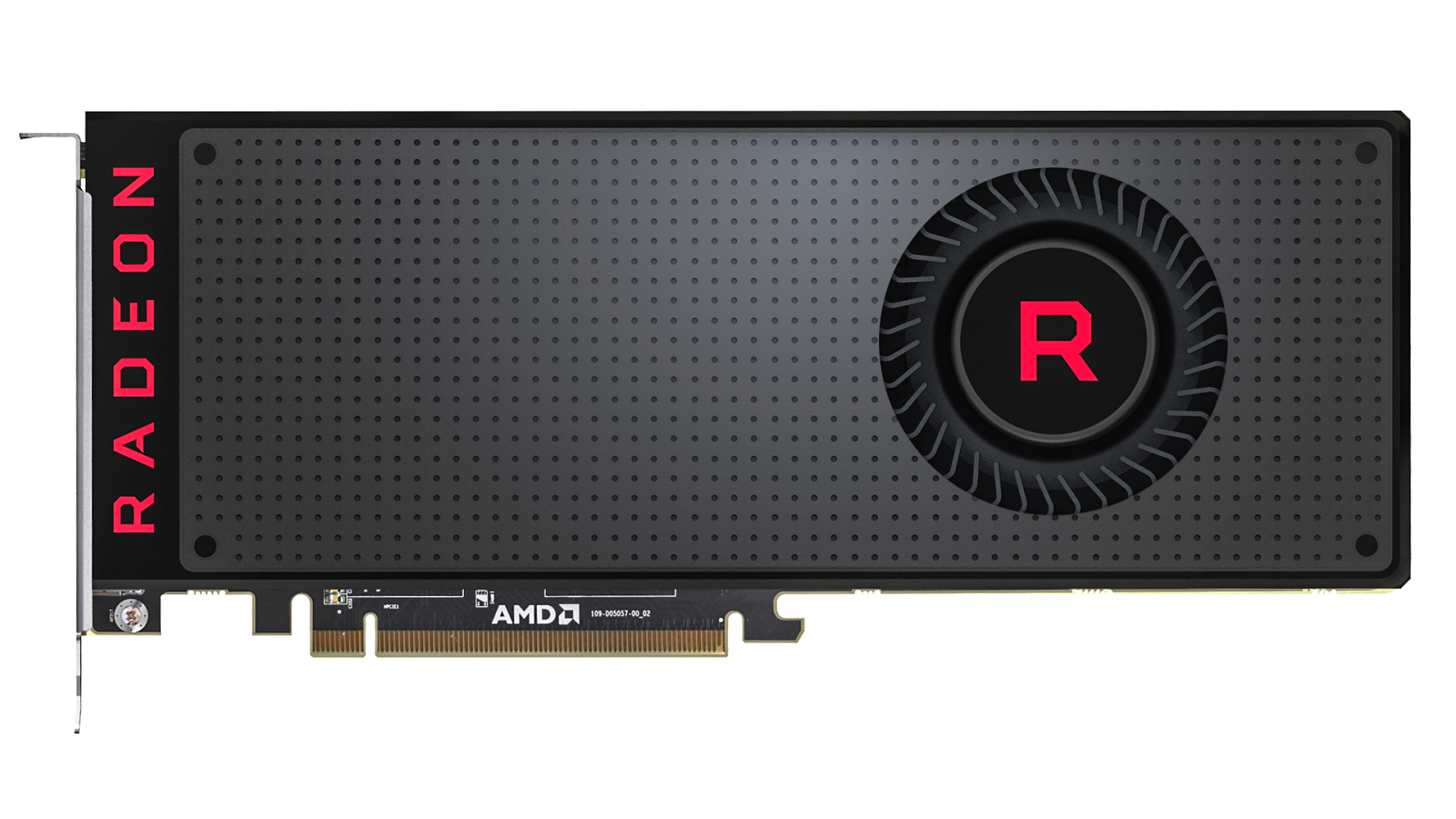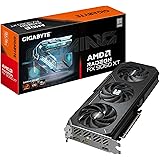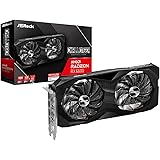The AMD Vega 56, launched in 2017, was designed to compete in the high-end graphics card market. Built on the “Vega 10” architecture, it features 56 Next-Gen Compute Units (NCUs), each containing 64 stream processors, resulting in a total of 3584 stream processors. These stream processors are the workhorses of the GPU, responsible for executing the complex calculations required for rendering graphics and performing other computational tasks.
Complementing the stream processors are 224 texture units, which handle the texturing of 3D models, adding detail and realism to the rendered images. The Vega 56 also boasts a transistor count of 12. 5 billion, indicative of its complex design and computational power.
The GPU operates at a base frequency of 1156 MHz and can boost up to 1471 MHz, dynamically adjusting its clock speed based on workload and thermal conditions to optimize performance. This allows the Vega 56 to deliver high frame rates in games and accelerate computationally intensive tasks.
A critical component of the Vega 56 is its memory subsystem. It utilizes 8GB of High Bandwidth Memory 2 (HBM2), a type of memory known for its high bandwidth and low power consumption compared to traditional GDDR5 memory. The HBM2 interface is 2048-bit wide, providing a massive memory bandwidth of 410 GB/s. This high bandwidth is essential for handling the large textures and complex data sets encountered in modern games and applications.
The Vega 56’s performance is also characterized by its peak pixel fill-rate of 94 GP/s and peak texture fill-rate of 330 GT/s. These metrics indicate the GPU’s ability to process pixels and textures per second, directly influencing its rendering capabilities.
In gaming, the AMD Vega 56 delivers strong performance, capable of running most modern games at high settings and resolutions. Its 3584 stream processors and 8GB of HBM2 memory allow it to handle complex scenes and textures with ease.
Independent benchmarks and reviews consistently place the Vega 56 in a competitive position against its main rival, the NVIDIA GeForce GTX 1070. In many titles, the Vega 56 either matches or slightly outperforms the GTX 1070, particularly in games that are well-optimized for AMD’s architecture.
However, the Vega 56’s performance can vary depending on the specific game and settings used. Some games may favor NVIDIA’s architecture, while others may benefit from AMD’s. Overall, the Vega 56 offers a compelling gaming experience at 1080p and 1440p resolutions, providing smooth frame rates and visually stunning graphics.

Cryptocurrency Mining Capabilities
Beyond gaming, the AMD Vega 56 gained significant attention for its capabilities in cryptocurrency mining. Its architecture and memory bandwidth make it well-suited for mining algorithms that rely on memory-intensive computations.
Specifically, the Vega 56 excels in mining Ethereum (ETH) and other cryptocurrencies that utilize the Ethash algorithm. At stock settings, the Vega 56 can achieve a hash rate of around 30 MH/s for Ethereum mining. With careful overclocking and optimization, this hash rate can be pushed to 37 MH/s or higher.
The Vega 56 is also effective in mining other cryptocurrencies, such as Zcash (ZEC) and Monero (XMR). It can achieve hash rates of around 400 Sol/s for Zcash and 1500 H/s for Monero at stock settings. Overclocking can further improve these hash rates, making the Vega 56 a popular choice among cryptocurrency miners.
However, it’s important to note that the profitability of cryptocurrency mining depends on various factors, including the price of the cryptocurrency, the difficulty of the mining algorithm, and the cost of electricity. Additionally, the increased demand for GPUs due to cryptocurrency mining can lead to price increases and supply shortages, making it more difficult for gamers and other consumers to purchase graphics cards.
Overclocking and Power Consumption
The AMD Vega 56 offers significant overclocking potential, allowing users to push its performance beyond stock settings. By increasing the core clock speed and memory clock speed, users can achieve higher frame rates in games and faster hash rates in cryptocurrency mining.
However, overclocking also increases the GPU’s power consumption and heat output. It’s essential to carefully monitor the GPU’s temperature and voltage to prevent damage. The Vega 56 is known for its relatively high-power consumption compared to other GPUs in its class. At stock settings, it typically consumes around 210 watts. Overclocking can further increase power consumption, requiring a robust power supply and adequate cooling.
One common approach to overclocking the Vega 56 involves undervolting the GPU while increasing the clock speeds. This can improve performance while reducing power consumption and heat output. However, it’s important to experiment with different voltage and clock speed settings to find the optimal balance between performance and stability.
Impact and Legacy
The AMD Vega 56 had a significant impact on the graphics card market. It offered a compelling alternative to NVIDIA’s offerings, providing strong performance at a competitive price point. Its capabilities in cryptocurrency mining also made it a popular choice among miners, contributing to its demand and popularity.
The Vega 56 helped to drive innovation in GPU technology, pushing the boundaries of performance and efficiency. Its use of HBM2 memory helped to popularize this technology, paving the way for its adoption in future GPUs.
While the Vega 56 is no longer the latest and greatest GPU on the market, it remains a capable and relevant option for gamers and cryptocurrency miners. Its architecture and specifications continue to provide solid performance, and its overclocking potential allows users to further enhance its capabilities.
Future Developments
The field of GPU technology is constantly evolving, with new architectures and features being introduced regularly. AMD has continued to innovate with its subsequent GPU generations, such as the Navi and RDNA architectures. These newer architectures offer improved performance, efficiency, and features compared to the Vega architecture.
Looking ahead, we can expect to see further advancements in GPU technology, including:
The AMD Vega 56 is a notable GPU that has made a significant impact on the cryptocurrency mining industries. Its architecture, specifications, and performance characteristics have made it a popular choice among users seeking high-end graphics capabilities. While newer GPUs have since been released, the Vega 56 remains a capable and relevant option, offering a compelling balance of performance and value. As GPU technology continues to evolve, we can expect to see even more exciting advancements in the years to come.
AMD Vega 56 Specifications :
- Compute Units : 56 nCU
- Stream Processors : 3584
- Texture Units : 224
- Transistor Count : 12.5B
- Base Frequency : 1156
- Boost Frequency : 1471
- Memory Type : HBM2
- Memory Interface : 2048-bit
- Memory Bandwidth : 410GB/s
- Peak Pixel Fill-Rate : 94 GP/s
- Peak Texture Fill-Rate : 330 GT/s
- Memory Data Rate : 1.6Gbps
- Memory Speed : 800MHz
- Memory Size : 8GB

- Ethereum Mining Hashrate : 30 MH/s
OverClocking Hashrate : 37 MH/s
- Zcash Mining Hashrate : 400 sol/s
OverClocking Hashrate : 450 sol/s
- Monero Mining Hashrate : 1500 H/S
OverClocking Hashrate : 1750 H/S
- KECCAK Mining Hashrate : 663.60 MH/s
- DaggerHashimoto [ EtHash : (ETH) & (ETC) ] Mining Hashrate : 35.86 MH/s
- Decred (DCR) Mining Hashrate : 2.42 GH/s
- Cryptonight [ (XMR) & (XDN) ] Mining Hashrate : 1.1 kH/s
- CryptoNightV7 Mining Hashrate : 1.1 KH/s
- Equihash [ (ZEC – ZEN – ZCL) & (BTG) & (KMD) & (HUSH) ] Mining Hashrate : 469.74 Sol/s
- Pascal [ (PASC) & (PASL) ] Mining Hashrate : 1.58 GH/s
- X11GOST [ Sibcoin (SIB) ] Mining Hashrate : 12 GH/s
- SIACOIN (SC) Mining Hashrate : 0.01 GH/s
AMD Radeon Vega 56 OverClocking Settings :
- Voltage : -20%
- Core : 1500
- Memory : 945
Power Consumption : 210 Watt/Per Hour




